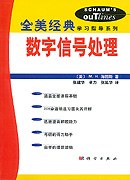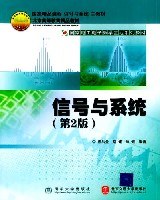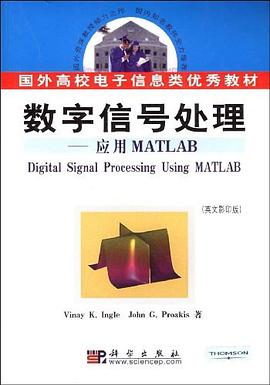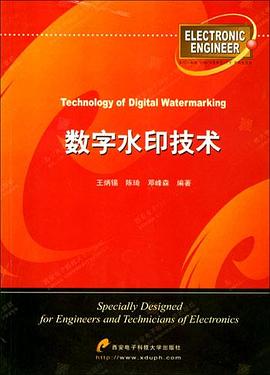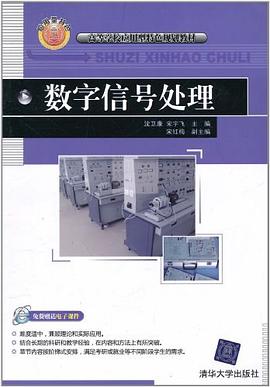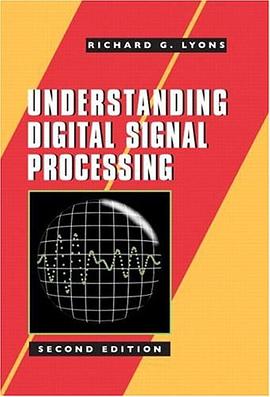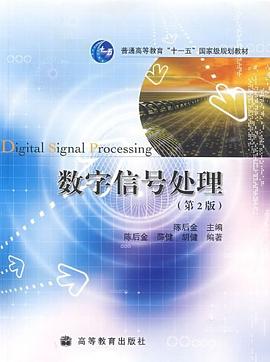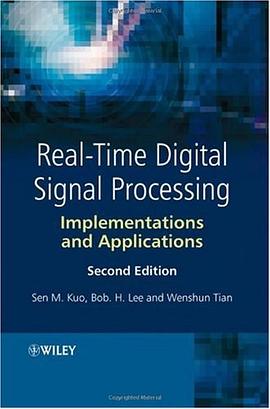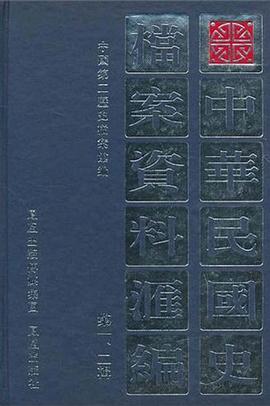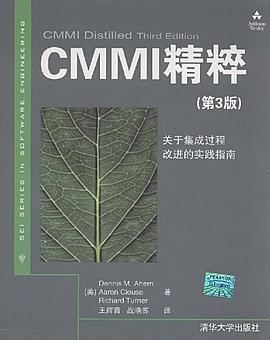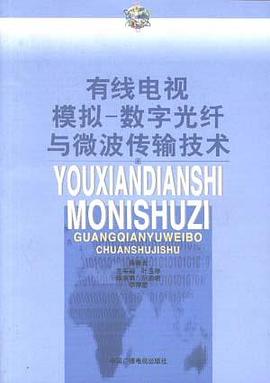

具體描述
This best–selling, easy to read book offers the most complete discussion on the theories and principles behind today′s most advanced communications systems. Throughout, Haykin emphasizes the statistical underpinnings of communication theory in a complete and detailed manner. Readers are guided though topics ranging from pulse modulation and passband digital transmission to random processes and error–control coding. The fifth edition has also been revised to include an extensive treatment of digital communications.
作者簡介
目錄資訊
Preface
Contents
Chapter 1 Prologue
1.1 The Communication Process
1.2 The Layered Approach
1.3 Theme Example—Wireless Communications
Chapter 2 Fourier Theory and Communication Signals
2.1 Introduction
2.2 The Fourier Transform
2.3 Properties of the Fourier Transform
2.4 The Inverse Relationship Between Time and Frequency
2.5 Dirac Delta Function
2.6 Fourier Transforms of Periodic Signals
2.7 Transmission of Signals Through Linear Systems
2.8 Filters
2.9 Low-Pass and Band-Pass Signals
2.10 Band-Pass Systems
2.11 Phase and Group Delay
2.12 Sources of Information
2.13 Numerical Computation of the Fourier Transform
2.14 Theme Example—Channel Estimation of a Wireless LAN Channel
2.15 Summary and Discussion
Chapter 3 Amplitude Modulation
3.1 Introduction
3.2 Amplitude Modulation
3.3 Double Sideband–Suppressed Carrier Modulation
3.4 Quadrature-Carrier Multiplexing
3.5 Single-Sideband and Vestigial-Sideband Methods of Modulation
3.6 Theme Example—VSB Transmission of Analog and Digital Television
3.7 Frequency Translation
3.8 Frequency-Division Multiplexing
3.9 Summary and Discussion
Chapter 4 Phase and Frequency Modulation
4.1 Introduction
4.2 Basic Definitions
4.3 Frequency Modulation
4.4 Phase-Locked Loop
4.5 Nonlinear Effects in FM Systems
4.6 The Superheterodyne Receiver
4.7 Theme Example—Analog and Digital FM Cellular Telephones
4.8 Summary and Discussion
Chapter 5 Random Variables and Processes
5.1 Introduction
5.2 Probability
5.3 Random Variables
5.4 Statistical Averages
5.5 Random Processes
5.6 Mean, Correlation, and Covariance Functions
5.7 Transmission of a Random Process Through a Linear Filter
5.8 Power Spectral Density
5.9 Gaussian Process
5.10 Noise
5.11 Narrowband Noise
5.12 Theme Example—Stochastic Model of a Mobile Radio Channel
5.13 Summary and Discussion
Chapter 6 Noise in Analog Modulation
6.1 Introduction
6.2 Receiver Model
6.3 Noise in DSB–SC Receivers
6.4 Noise in AM Receivers
6.5 Noise in FM Receivers
6.6 Pre-emphasis and De-emphasis in FM
6.7 Theme Example—Link Budget of FM Satellite Link
6.8 Summary and Discussion
Chapter 7 Digital Representation of Analog Signals
7.1 Introduction
7.2 Why Digitize Analog Sources?
7.3 The Sampling Process
7.4 Pulse-Amplitude Modulation
7.5 Time-Division Multiplexing
7.6 Pulse-Position Modulation
7.7 Theme Example—PPM in Impulse Radio
7.8 The Quantization Process
7.9 Pulse-Code Modulation
7.10 Delta Modulation
7.11 Theme Example—Digitization of Video and MPEG
7.12 Summary and Discussion
Chapter 8 Baseband Transmission of Digital Signals
8.1 Introduction
8.2 Baseband Pulses and Matched Filter Detection
8.3 Probability of Error Due to Noise
8.4 Intersymbol Interference
8.5 Eye Pattern
8.6 Nyquist’s Criterion for Distortionless Transmission
8.7 Baseband M-ARY PAM Transmission
8.8 Tapped-Delay-Line Equalization
8.9 Theme Example—100BASE-TX—Transmission of 100 Mbps Over Twisted Pair
8.10 Summary and Discussion
Chapter 9 Band-Pass Transmission of Digital Signals
9.1 Introduction
9.2 Band-Pass Transmission Model
9.3 Transmission of Binary PSK and FSK
9.4 M-ARY Data Transmission Systems
9.5 Comparison of Noise Performances of Various PSK and FSK Systems
9.6 Theme Example—Orthogonal Frequency Division Multiplexing (OFDM)
9.7 Summary and Discussion
Chapter 10 Information and Forward Error Correction
10.1 Introduction
10.2 Uncertainty, Information, and Entropy
10.3 Source-Coding Theorem
10.4 Lossless Data Compression
10.5 Theme Example—The Lempel–Ziv Algorithm and File Compression
10.6 Discrete Memoryless Channels
10.7 Channel Capacity
10.8 Channel Coding Theorem
10.9 Capacity of a Gaussian Channel
10.10 Error Control Coding
10.11 Linear Block Codes
10.12 Convolutional Codes
10.13 Trellis-Coded Modulation
10.14 Turbo Codes
10.15 Summary and Discussion
Appendix Mathematical Tables
Glossary
Bibliography
Index
· · · · · · (收起)
Contents
Chapter 1 Prologue
1.1 The Communication Process
1.2 The Layered Approach
1.3 Theme Example—Wireless Communications
Chapter 2 Fourier Theory and Communication Signals
2.1 Introduction
2.2 The Fourier Transform
2.3 Properties of the Fourier Transform
2.4 The Inverse Relationship Between Time and Frequency
2.5 Dirac Delta Function
2.6 Fourier Transforms of Periodic Signals
2.7 Transmission of Signals Through Linear Systems
2.8 Filters
2.9 Low-Pass and Band-Pass Signals
2.10 Band-Pass Systems
2.11 Phase and Group Delay
2.12 Sources of Information
2.13 Numerical Computation of the Fourier Transform
2.14 Theme Example—Channel Estimation of a Wireless LAN Channel
2.15 Summary and Discussion
Chapter 3 Amplitude Modulation
3.1 Introduction
3.2 Amplitude Modulation
3.3 Double Sideband–Suppressed Carrier Modulation
3.4 Quadrature-Carrier Multiplexing
3.5 Single-Sideband and Vestigial-Sideband Methods of Modulation
3.6 Theme Example—VSB Transmission of Analog and Digital Television
3.7 Frequency Translation
3.8 Frequency-Division Multiplexing
3.9 Summary and Discussion
Chapter 4 Phase and Frequency Modulation
4.1 Introduction
4.2 Basic Definitions
4.3 Frequency Modulation
4.4 Phase-Locked Loop
4.5 Nonlinear Effects in FM Systems
4.6 The Superheterodyne Receiver
4.7 Theme Example—Analog and Digital FM Cellular Telephones
4.8 Summary and Discussion
Chapter 5 Random Variables and Processes
5.1 Introduction
5.2 Probability
5.3 Random Variables
5.4 Statistical Averages
5.5 Random Processes
5.6 Mean, Correlation, and Covariance Functions
5.7 Transmission of a Random Process Through a Linear Filter
5.8 Power Spectral Density
5.9 Gaussian Process
5.10 Noise
5.11 Narrowband Noise
5.12 Theme Example—Stochastic Model of a Mobile Radio Channel
5.13 Summary and Discussion
Chapter 6 Noise in Analog Modulation
6.1 Introduction
6.2 Receiver Model
6.3 Noise in DSB–SC Receivers
6.4 Noise in AM Receivers
6.5 Noise in FM Receivers
6.6 Pre-emphasis and De-emphasis in FM
6.7 Theme Example—Link Budget of FM Satellite Link
6.8 Summary and Discussion
Chapter 7 Digital Representation of Analog Signals
7.1 Introduction
7.2 Why Digitize Analog Sources?
7.3 The Sampling Process
7.4 Pulse-Amplitude Modulation
7.5 Time-Division Multiplexing
7.6 Pulse-Position Modulation
7.7 Theme Example—PPM in Impulse Radio
7.8 The Quantization Process
7.9 Pulse-Code Modulation
7.10 Delta Modulation
7.11 Theme Example—Digitization of Video and MPEG
7.12 Summary and Discussion
Chapter 8 Baseband Transmission of Digital Signals
8.1 Introduction
8.2 Baseband Pulses and Matched Filter Detection
8.3 Probability of Error Due to Noise
8.4 Intersymbol Interference
8.5 Eye Pattern
8.6 Nyquist’s Criterion for Distortionless Transmission
8.7 Baseband M-ARY PAM Transmission
8.8 Tapped-Delay-Line Equalization
8.9 Theme Example—100BASE-TX—Transmission of 100 Mbps Over Twisted Pair
8.10 Summary and Discussion
Chapter 9 Band-Pass Transmission of Digital Signals
9.1 Introduction
9.2 Band-Pass Transmission Model
9.3 Transmission of Binary PSK and FSK
9.4 M-ARY Data Transmission Systems
9.5 Comparison of Noise Performances of Various PSK and FSK Systems
9.6 Theme Example—Orthogonal Frequency Division Multiplexing (OFDM)
9.7 Summary and Discussion
Chapter 10 Information and Forward Error Correction
10.1 Introduction
10.2 Uncertainty, Information, and Entropy
10.3 Source-Coding Theorem
10.4 Lossless Data Compression
10.5 Theme Example—The Lempel–Ziv Algorithm and File Compression
10.6 Discrete Memoryless Channels
10.7 Channel Capacity
10.8 Channel Coding Theorem
10.9 Capacity of a Gaussian Channel
10.10 Error Control Coding
10.11 Linear Block Codes
10.12 Convolutional Codes
10.13 Trellis-Coded Modulation
10.14 Turbo Codes
10.15 Summary and Discussion
Appendix Mathematical Tables
Glossary
Bibliography
Index
· · · · · · (收起)
讀後感
評分
評分
評分
評分
評分
用戶評價
评分
评分
评分
评分
评分
相關圖書
本站所有內容均為互聯網搜索引擎提供的公開搜索信息,本站不存儲任何數據與內容,任何內容與數據均與本站無關,如有需要請聯繫相關搜索引擎包括但不限於百度,google,bing,sogou 等
© 2025 qciss.net All Rights Reserved. 小哈圖書下載中心 版权所有

